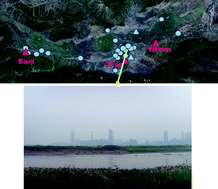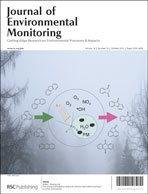The development of western China in the past decade has led to increased discharges of wastewater and river pollution. The Wei River is the largest tributary of the Huang He River, but its geochemistry has not been thoroughly investigated. Sixty-three bed-surface sediment samples were collected from the Wei and analyzed for 24 elements by WDXRF; objectives for the study were to investigate the geochemical properties of the sediments; identify sources, and assess pollution levels and environmental risks. Major and trace element concentrations were comparable with those in other large rivers in China, but potentially hazardous trace elements (PHTEs) were lower than in the Yangzi or Pearl Rivers; most likely due to dilution of contaminants by the large sand inflows into the Wei and a lower level of industrialization. Nonetheless, pollution and risk analyses demonstrate slight contamination of Cr, Mn, Nb, Ni and Zn, moderate contamination of Cu and Pb, and strong contamination of As at some locations. Adverse biological effects from Ni and Cu are possible and are likely from As. Statistical and spatial analyses indicate that agriculture runoff and industrial wastewater discharge contribute to the contamination of this river. A comprehensive environmental management strategy, realistic national standards for wastewater discharge, and rigid enforcement are needed to address river pollution in China.

You have access to this article
 Please wait while we load your content...
Something went wrong. Try again?
Please wait while we load your content...
Something went wrong. Try again?


 Please wait while we load your content...
Please wait while we load your content...